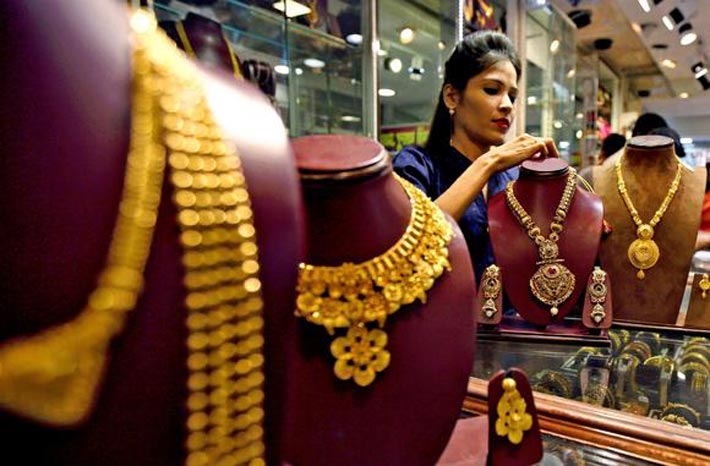The precious metal proved less alluring to investors in 2017 than stocks

TOKYO -- India and China had little sway over the global gold market last year.
Overall demand for the precious metal in 2017 declined for the first time in two years, as the globe's rollicking stock markets lured investors from other assets. Gold-backed exchange-traded funds and gold bars reflected the same trend, with inflows to each dropping markedly.
But actual demand, as opposed to investor demand, was solid. Demand for gold jewelry jumped 4% from the previous year, largely thanks to China and India, the world's two largest consumers of the metal
In India, demand for gold jewelry jumped 10%. A goods and services tax introduced in July briefly put the brakes on consumption, but good weather in rural areas prompted farmers to buy more jewelry. Lower gold prices in rupee terms also stirred buying.
According to a report issued Tuesday by the World Gold Council, though, overall global demand for gold declined 7%, to 4,071 tons on a preliminary basis. Investment demand for the precious metal dropped 23% to 1,232 tons. Gold-backed ETFs were down 60%.
In 2016, more cash flowed into the gold market than in any of the previous few years as Brexit and Donald Trump pushed investor money that way. Last year's decline was partly in response to the sharp increase in 2016.
Demand for gold bars and coins, which are mainly purchased by retail investors, also fell 2% last year. The U.S. marked the steepest year-on-year decline, of 58%, hitting its lowest level in 10 years.
During the same time span, strong corporate earnings were pushing up U.S. stocks to record highs. Some investors shifted their money to stock markets in anticipation of higher yields, said Takahiro Morita, the World Gold Council's regional director for Japan.
Gold prices rose in 2017, however, due to geopolitical risk regarding North Korea and "Russiagate," the ongoing political scandal regarding the Trump campaign's alleged ties to Russia.
International prices hovered at around $1,200 to $1,360 per troy ounce for the year, up 12%. While higher gold prices hindered fresh investment, many investors sold the metal to secure cash.
Demand for gold in the technology sector rose for the first time in seven years, driven by growing demand for sensors and semiconductors used in smartphones and virtual reality technologies.
Although many investors shifted their money to stocks last year, there is growing uncertainty about the future due to recent declines in global stock prices.
Koichiro Kamei, a financial and precious metals analyst, said lower stock prices could throw cold water on bullish market sentiment and prompt investors to bring their money back to the gold market.
Source: asia.nikkei.com
